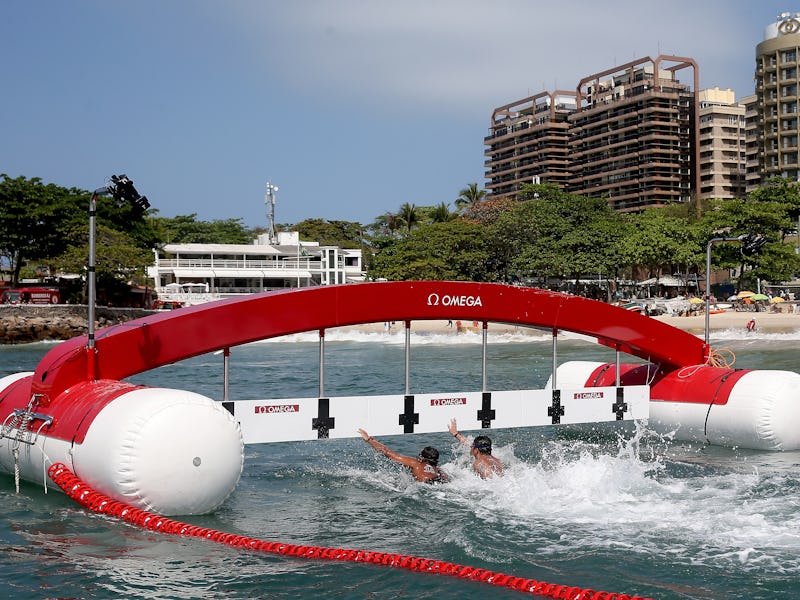Rio Swimmers Must Choose Between Winning and Getting Poisoned
Just three teaspoons of water could make marathon and triathlon swimmers violently ill.

In very scientific terms, Rio de Janeiro’s water quality is somewhere between very icky and horrifyingly gross: Olympic athletes apparently need only to ingest three teaspoons of the water to become violently ill.
The water quality problems aren’t a simple case of a stray bacterium here and there: there’s literal raw human sewage that smells bad. In light of this, Olympic athletes are being given some interesting advice: Don’t put your head underwater.
Anyone who has ever been in an open body of water knows that ingesting three teaspoons is kind of inevitable. Athletes competing in both the triathlon and marathon swimming events are now faced with an unappealing conundrum: Do they keep their heads above water the entire time to cut down on the amount of ickiness they will inevitably consume anyway, at the expense of their performance? Or do they simply fucking go for it and risk having to run off the podium mid medal-acceptance to go spew toxic foam out of both ends?
Open-water swimmers have the option of employing a variety of strokes during the course of their events, but under normal circumstances they would spend a lot of that time with their heads underwater. Swimming in a triathlon isn’t like swimming in a pool for lots of obvious reasons, but one of them is that you have to “sight” — there are no walls or black lines that will let you know where you are, so you’re pulling your head up a lot to check your position. But according to Karl Riecken, the performance testing coordinator at the National Training Center, that’s maybe every five to 10 strokes — the rest of the time, the swimmer’s head is probably underwater.
“You typically swim with your head underwater most of the time,” Riecken said. “It takes effort to keep your head out; when your head comes up, your hips go down, it creates more drag. It’s definitely going to slow them down if they have to [keep their heads up] the whole time.”
The combination of strokes an open-water swimmer employs will vary depending on coaching style and individual strengths and preferences, but a common choice is a water polo-like stroke, wherein the athlete can hold their head way out of the water or keep just their eyes above the waterline, depending on conditions (which direction are the waves coming from, how high, where they stand in relation to competitors, etc.) A “kayak” stroke involves an athlete moving their arms faster than they would in a pool-style stroke, where the focus would be more on elongation than speed; when they’re facing external elements like currents and fellow swimmers not separated by lanes, Riecken says, they don’t have the opportunity to focus on the efficiency of a longer stroke.
It’s hard to put a number on the handicap athletes who choose to stay above water might face, but Riecken estimates that it could mean at least a 10 percent slower finish tie; maybe up to 25 percent.
“If you think about the stroke mechanics, when they’re pushing down in front to lift their heads up, that’s a significant amount of energy lost there,” Riecken said. “A lot of these elite swimmers train for these worst-case scenarios, so hopefully we might just see a couple of percentage points slower. But certainly they’re not normally having to keep their heads up for any extended period of time.”